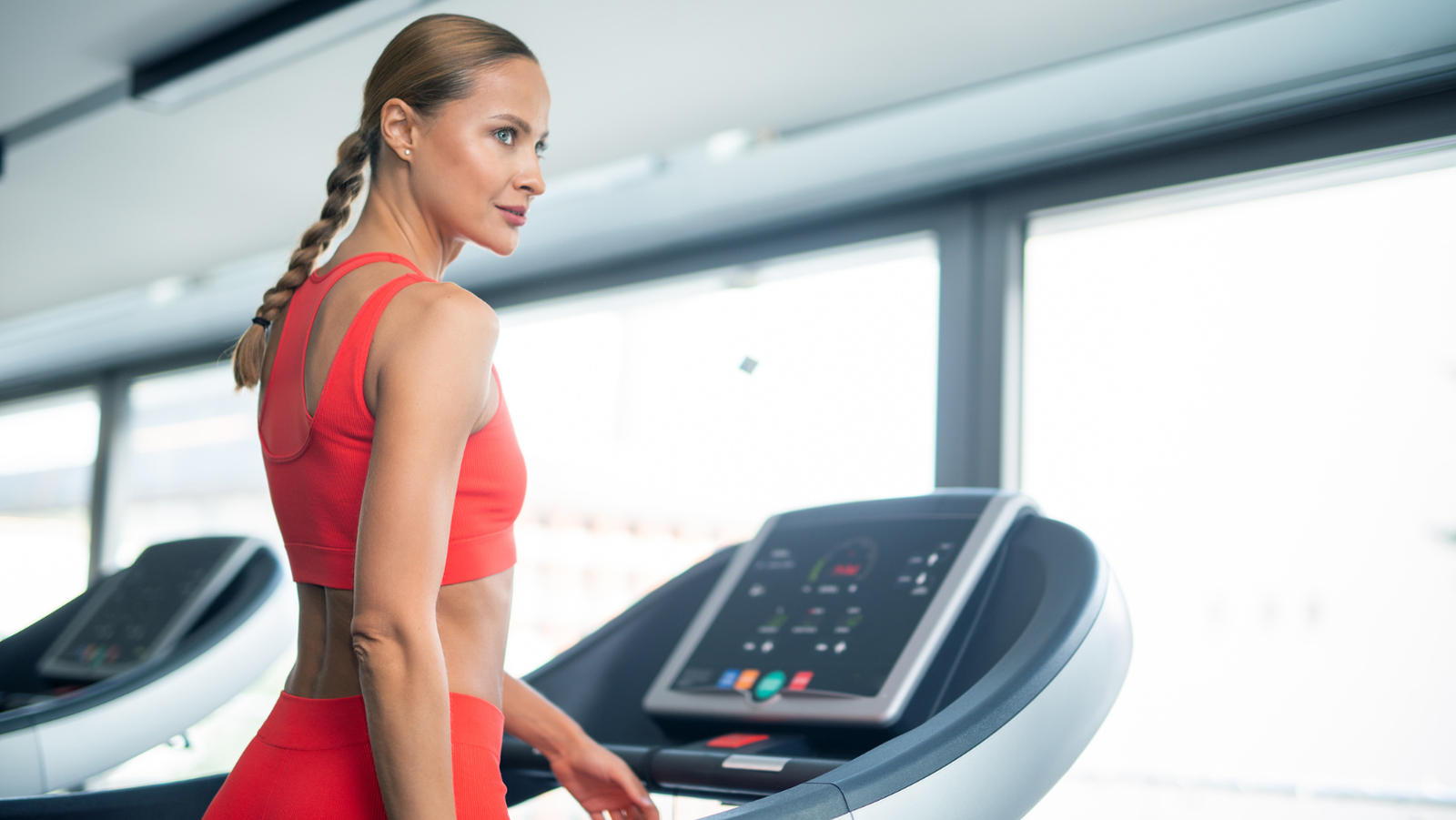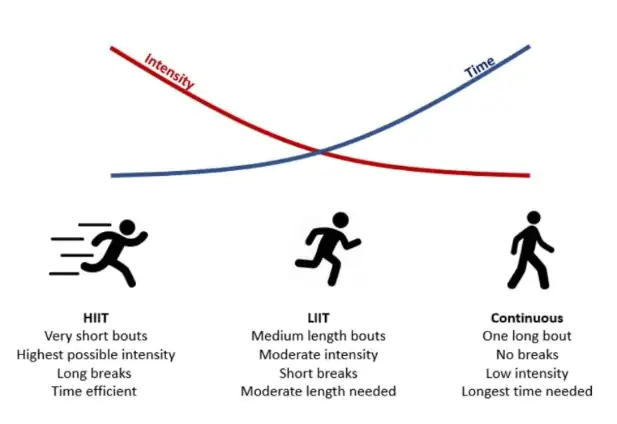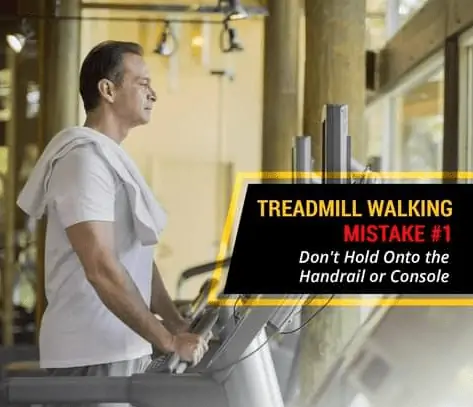The treadmill may help you lose weight by increasing your aerobic capacity, burning calories, and improving your overall fitness. How do you use a treadmill to lose weight? Yes, you may get on and start running immediately, but it’s more successful if you make a strategy beforehand. How long should you run on the treadmill? A steady-state run and HIIT training have their advantages and disadvantages.
If you’re serious about losing weight, you’ll also want to know how frequently and for how long you should run on it. You don’t have to be concerned. I have been running for the last 24 years now. Besides, we contacted some other experts as well and got their input. Using a treadmill for weight loss is a great way to shed pounds.
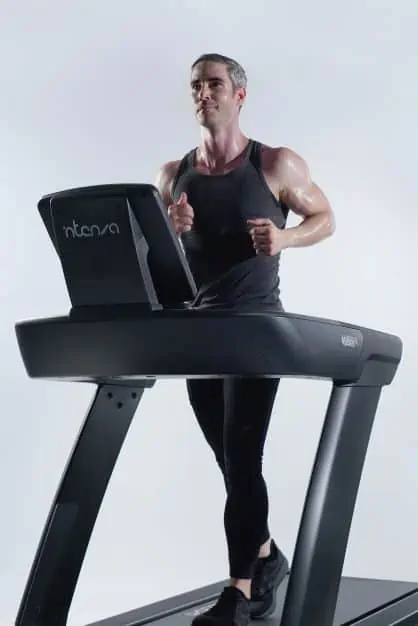
Table of Contents
How to start running on a treadmill?
To properly run on a treadmill, you should:
- Warm up before starting your run by walking or jogging slowly for a few minutes.
- Set it on an incline between 1% and 2% to simulate outdoor running and avoid running downhill.
- Look up and gaze forward, not at your feet or the console.
- Run with your natural gait and avoid choppy or short strides. Strike the belt with the ball of your foot, not your heel, and keep your feet under your body.
- Start by straddling the treadmill with your feet on the sides of the belt, and never have your feet on the belt before you start. Use the handrails only for balance, not to support your weight.
- Vary your speed, incline, and duration to challenge yourself and prevent boredom. You can use the pre-set workouts or intervals or create your own.
- Cool down after finishing your run by walking slowly for a few minutes. Stretch your muscles to prevent stiffness or injury.
20 minute HIIT treadmill workout
A 20-minute HIIT workout is a fast and effective way to burn calories and improve your fitness. HIIT involves alternating between short bursts of intense exercise and longer recovery periods. Here are some examples of 20-minute HIIT workouts:
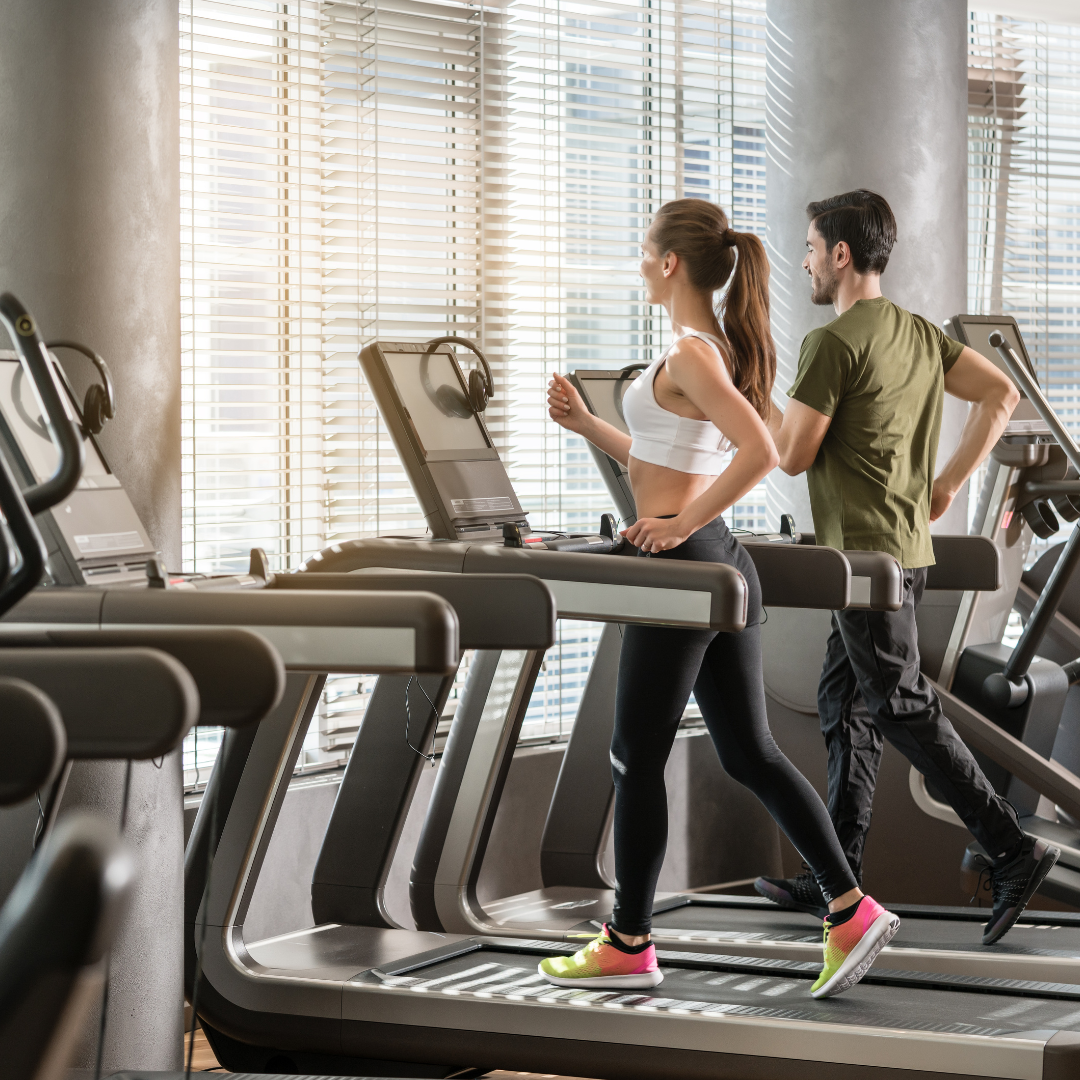
- De-Stressing Walk: Walk at different inclines and speeds for 2-3 minutes, followed by 1 minute of recovery walk. Repeat five times.
- Beginner HIIT: Run at a fast jog for 30 seconds, followed by a 60-second recovery walk. Repeat ten times.
- Tabata Sprints: Sprint at your maximum speed for 20 seconds, followed by 10 seconds of rest. Repeat eight times. Recover for 1 minute. Repeat the cycle once more.
- Hill Run: Run at different inclines and speeds for 1 minute, followed by 1 minute of flat run. Repeat five times. Increase the incline and speed each time.
Drink plenty of water to stay hydrated. Adjust the speed, incline, duration, and intensity of the intervals according to your fitness level and goals. Have fun and enjoy the benefits of HIIT!
Why do I run slower on a treadmill?
Running on a treadmill vs outside is slower for several reasons. Some of them are:
- Change in the running form: You may unconsciously alter your stride or posture when running on it, either because you are too close to the console, too far back on the belt, or looking down at a screen.
- Lack of variety in pace or terrain: You may get bored or less motivated by running at a constant speed and incline.
- Utilizing the same muscles for the whole run: Running on a flat and smooth surface can cause fatigue or soreness in the muscles you use for the entire run.
- Poor treadmill calibration: The speed and distance displayed on the treadmill may not be accurate, especially if it is old or poorly maintained.
- Mental dislike of the treadmill: If you have a negative attitude towards it, you may not perform as well as outside.
Is running on a treadmill bad for you?
Running on a treadmill is not bad, but it has drawbacks compared to running outside. Here are some of the main points to consider:
- It can be boring, monotonous, or less motivating.
- You miss the scenery, variety, and challenge of running outside.
- You do not have to deal with uneven terrain, obstacles, or changes in direction, but that can improve your coordination and balance.
- You burn fewer calories, as you do not have to overcome air resistance or wind drag.
- It can reduce the activation of your hamstrings and glutes, as the belt helps propel you forward.
You may want to vary your running routine by combining treadmill and outdoor running to get the best of both worlds.
Can running on a treadmill make you faster?
Yes, running on a treadmill can make you faster. However, it is essential to note that treadmill running differs from outdoors.
Here are some of the reasons why running on a treadmill can make you faster:
- You can control the speed and incline. This allows you to run at a specific pace that is challenging but not too difficult. This can help you to increase your speed over time gradually.
- You can do speed workouts. Speed workouts are a great way to improve your running speed. On a treadmill, you can easily do interval training, tempo runs, and hill repeats.
- Is running on a treadmill easier? There are no wind or hills to contend with on a treadmill, making focusing on your running form and technique easier.
Treadmill HIIT aids post-workout calorie-burning
A benefit of the HIIT training format is that it increases EPOC or excess post-exercise oxygen consumption. In this high-metabolism state, your body uses more energy and burns more calories to compensate for the extra oxygen it has taken in during an intensive workout. Even though EPOC won’t endure for hours (and may only burn a few calories), HIIT exercise on the treadmill is still an additional advantage.
Tips to lose weight effectively
Incorporate a Slight Elevation
Adjust the treadmill’s inclination to anything between 1% and 2%. A gradual climb better mimics outside jogging since there is no wind resistance inside. It’s OK to use a treadmill with an inclination of 0 when you first start jogging until you gain fitness and become more comfortable.
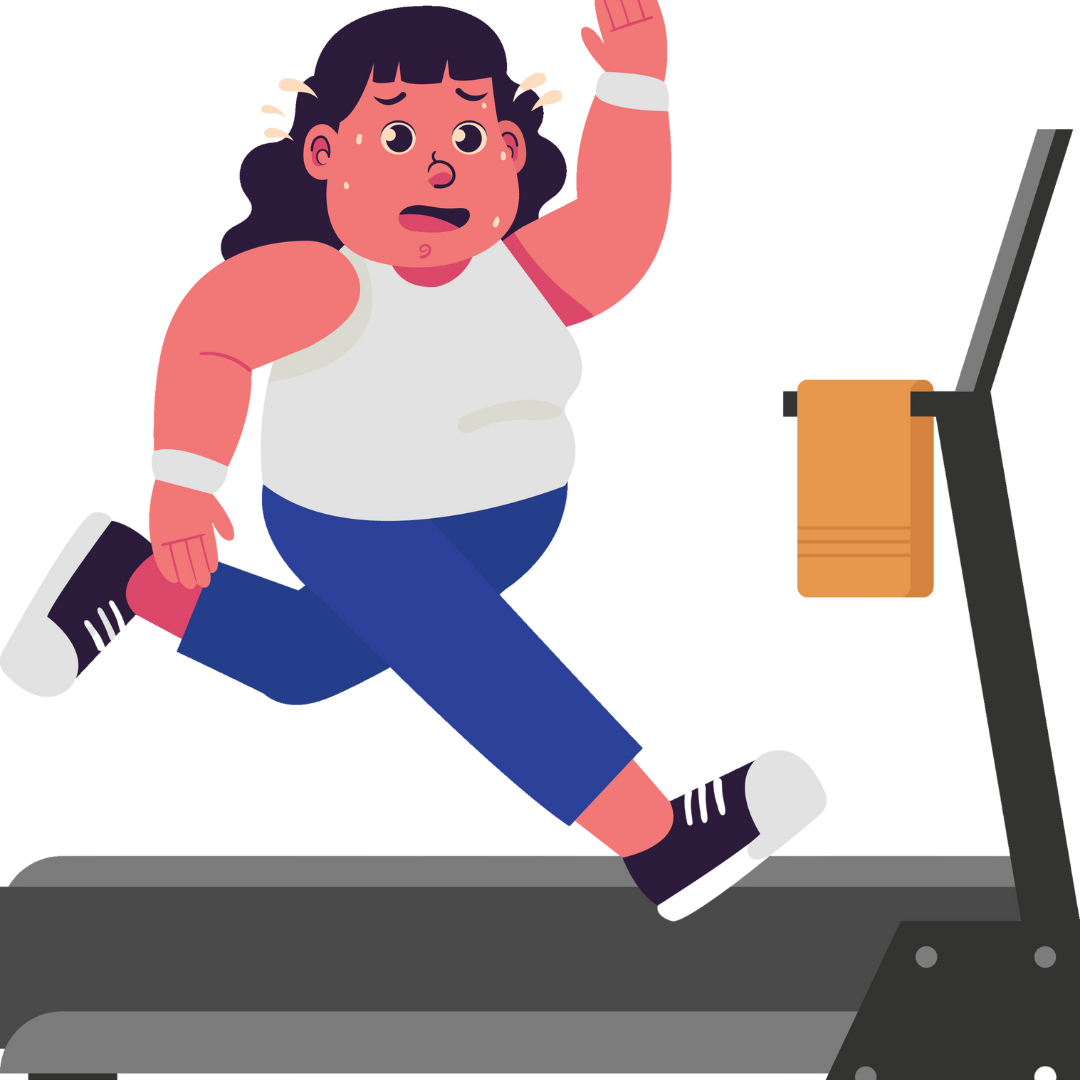
When you keep your inclination level at zero, you are jogging on a tiny downhill. You’re probably not exercising hard enough if you’re on the treadmill and reading a whole magazine. It’s not a good idea to run every day or the whole run at a fast pace, but it’s a good idea to challenge yourself sometimes.
You may want to increase the slope or pace of your exercise so that you are challenged for at least some of the time. To increase your speed without increasing your pace for the whole run, consider using interval training, in which you run hard for a while and then recover for another interval. Interval training may be done once or twice a week if you like (never two days in a row).
Holding on to the handrail or console is not recommended
Walking or jogging on a treadmill is sometimes accompanied by the mistaken belief that one must grasp onto the handrails. Handrails are simply there to assist you in safely getting on and off the treadmill, though.
As will be discussed, holding on to the rails has a few drawbacks. Running in this position may cause neck, shoulder, and back discomfort since it forces you to bend your knees and lean over. Maintain a straight, upright posture. Your chin should be level with your leveled shoulders, your back straight, and your head up.
Do as if you were jogging outdoors, holding your arms at a 90-degree angle to practice excellent upper body form. In truth, hanging on to the rails makes it easier for you to keep up the pace and work more, even if it makes you feel like you’re working harder. When jogging on a treadmill, assume that the rails aren’t there.
Runners afraid of falling usually do so because they go too quickly or climb too steep an elevation. You may either slow down or lower your inclination. Safety and form take precedence above anything else.
Best shoes for running on a treadmill
Depending on your preferences, foot shape, and running style there are various options. Do keep the following factors in mind
- Weight: Treadmill shoes should be lightweight and breathable, as you don’t need as much cushioning or protection as you would for running outside.
- Cushioning: It should be just enough to absorb the impact of running on a flat surface. Also, check your comfort and the responsiveness you like.
- Stability: They should support your feet and prevent overpronation or supination, which can lead to injuries.
- Responsiveness: They should have good energy return to help propel you forward and make your runs more efficient. Look for springy midsole or rocker-shaped shoes to help smooth the transition from heel to toe.
Take more steps per minute
Count how many times your foot touches the belt in a minute to get an idea of your stride count (since you have a timer on the console). Add two steps each minute to obtain your total number of steps per minute.
To increase your treadmill stride count, concentrate on taking shorter, faster steps and keeping your feet near the belt. This is a great way to beat treadmill boredom and enhance your outside running abilities.
Do not go on or off a running treadmill
Jumping or falling from a fast-moving treadmill is a common cause of treadmill injuries.
Whenever you have an urgent need, like going to the restroom or getting some water, slow the treadmill down and reduce the slope. Then, cautiously walk off. Don’t attempt to take up where you left off at a rapid speed or steep climb when you get back on.
To avoid becoming sidetracked, ensure you have everything you’ll need before you begin your runs, such as a towel, drink, and headphones.
What’s the ideal running speed?
The answer to this question is subjective and contingent on your intended outcome. A brisk ten-minute workout is completely acceptable if you’re just getting started. With practice, you may want to increase the treadmill’s pace gradually.
You must increase your exercise intensity to shed pounds or prepare for a race. Running at least three miles per hour for 30 minutes is a good goal for someone preparing for a 5K event, for example.
How far should you go in one day?
As a beginner or if you’re already sweating, one mile is more than enough. Increasing your running distance is critical, whether you’re aiming to shed pounds or get ready for a race. A 0.1-mile increment on the treadmill may help you attain your desired distance.
Basic Training
- 20 minutes is the estimated time
- Three to four times a week.
Advanced Training
- An hour and a half (minimum).
- At least four times every week.
How long will it take?
- Warm-up and cool-down heart rates should be 55-65% of your maximum heart rate.
- Aim for a heart rate between 65 and 75 percent of your maximum during exercise.
Conclusion
A decent rule of thumb is to raise your speed by 0.5 mph every other time you exercise and increase your run duration by one minute at the same time. Running at more than four miles per hour is not advised. When running, you should constantly keep your form in mind.
Running properly can help you avoid being hurt while on the trail. When utilized correctly, the treadmill may be a very effective tool for losing weight. Remember to gradually increase your pace to prevent harm and make progress safely and effectively.
FAQs:
Is running on a treadmill for 20 minutes enough?
Body fat may be reduced, and muscle mass can be increased by doing HIIT on a treadmill for 20 minutes daily. While interval training may tax the body and mind, it is one of the most efficient methods to prepare for a race, particularly if you are limited by time.
Does the treadmill burn belly fat?
The answer to this question is “Yes.”
One long-term benefit of frequent treadmill workouts is that visceral fat will be permanently eliminated from the body.
How long does it take to burn 100 calories on a treadmill?
Running is the quickest method to burn off 100 calories. A marathoner or a sprinter isn’t necessary for fat loss. Burn 100 calories in one mile in 10 minutes.
Is there a better time of day to run on the treadmill than others?
According to some research, exercising around 7 a.m. instead of later in the afternoon or evening may help people sleep better at night. On top of that, exercising on an empty stomach might help you burn more fat while you’re working out.
How much weight can you lose on a treadmill in a week?
Treadmill workouts have been shown to help people lose up to seven pounds in one week.

